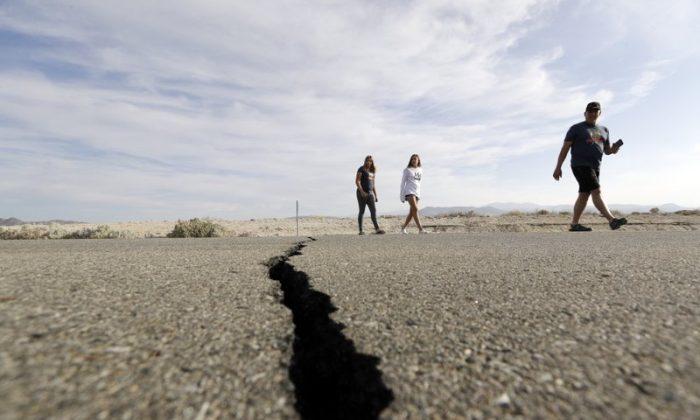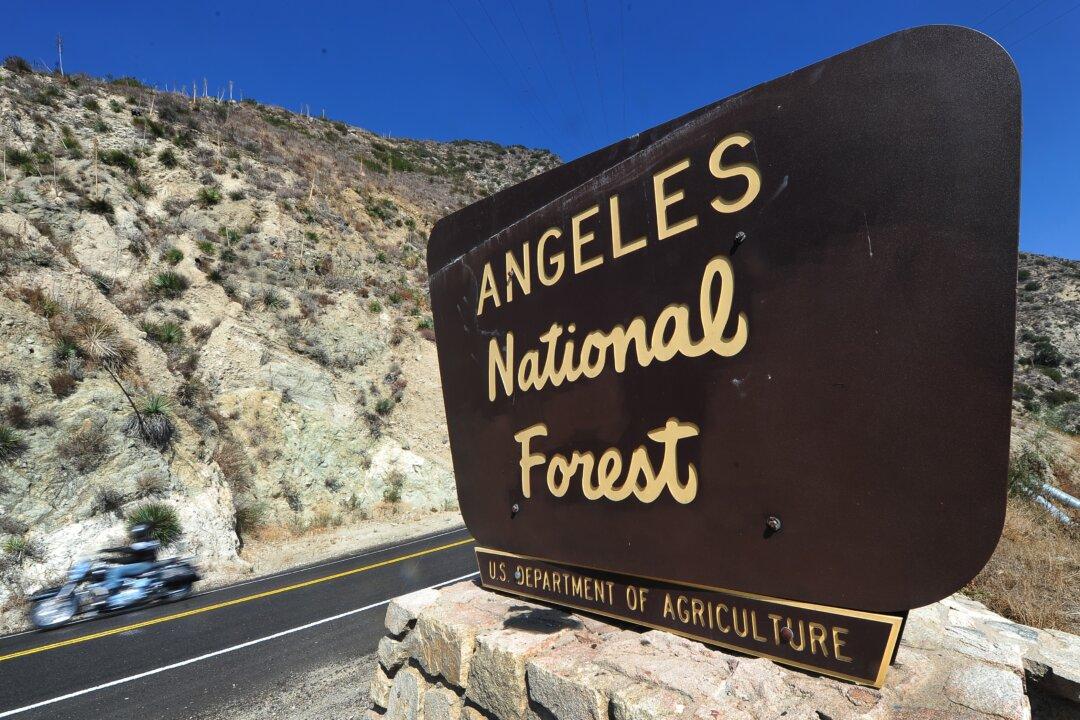California could be hit with a massive earthquake—possibly up to a 6.7 to 7.0 magnitude temblor—in the next century, according to the U.S. Geological Survey’s latest earthquake study.
“There’s a very high probability—and our maps show it—for large earthquakes to occur in California,” Mark Petersen, USGS geophysicist and lead author of the study, told The Epoch Times. “It could be in 100 years, or it could be 50 years.”
Earthquakes can happen in almost any area of the United States, Mr. Petersen said, but the risk is much higher and more frequent in California because of the state’s abundance of fault lines and other features that contribute to quakes.
“This was a massive, multi-year collaborative effort between federal, state, and local governments and the private sector,” Mr. Petersen said. “The new seismic hazard model represents a touchstone achievement for enhancing public safety.”
The newest update identified nearly 500 additional faults nationwide that can produce damaging quakes.
By using supercomputers to process historical data, soils, and other characteristics that factor into earthquake effects, the study’s scientists created the most up-to-date information to help engineers, architects, and policymakers design the safest and most cost-effective buildings and homes to survive future earthquakes.
Because of the massive loss of life and property, California subsequently received federal funds to speed up the study of earthquake hazards.
Scientists aren’t yet able to predict when an earthquake will strike, but they are working to learn more about the complexities of the events to better inform local and state officials about how the temblors could impact buildings and infrastructure.

Most notably, scientists found more possibility for damaging earthquakes along the central and northeastern Atlantic Coast, including in Washington, D.C., Philadelphia, New York, and Boston.
There is also a chance for the largest quakes in California and Alaska, according to Mr. Petersen.
The new model shows nearly 75 percent of the United States could experience potentially damaging earthquakes and ground shaking, putting hundreds of millions of people at risk.
Also, 37 U.S. states have experienced earthquakes reaching above magnitude 5 in the past 200 years, according to the study.
“It’s a major process to get the best available science we can use to estimate shaking hazards,” Mr. Petersen said. “And we want to do this so we can have resilient cities.”
The new model also shows Hawaii has greater potential for shaking because of recent volcanic eruptions and seismic unrest on the islands.
Scientists found more areas with increased quake hazards by including new ground-motion data, soil information, and information from about 130,000 U.S. earthquakes and 120,000 global tremors, according to the geological survey.
“We looked across the whole globe and we have a lot of records from earthquakes,” Mr. Petersen said. “Even though we can’t predict earthquakes, we can forecast earthquakes.”
Scientists tried to understand where and the size and level of shaking that occurs in every U.S. state.
“It’s a major process to get the best available science we can use to estimate shaking hazards,” he said.
While researching for the study, Mr. Petersen said he was most surprised by how earthquake hazards increased in some areas and decreased in others.
“Many more people live in areas which we think could have damaging shaking,” he said.

In California, the state has a complex model of earthquake ruptures. Some quakes can involve more than one fault line, which is a long crack in the surface of the earth where earthquakes usually occur.
The Cascadia Subduction Zone, which is an earthquake fault off northern California that stretches from Northern Vancouver Island to Cape Mendocino, usually produces the largest quakes, sometimes reaching 9 magnitude or higher, according to Mr. Peterson.







